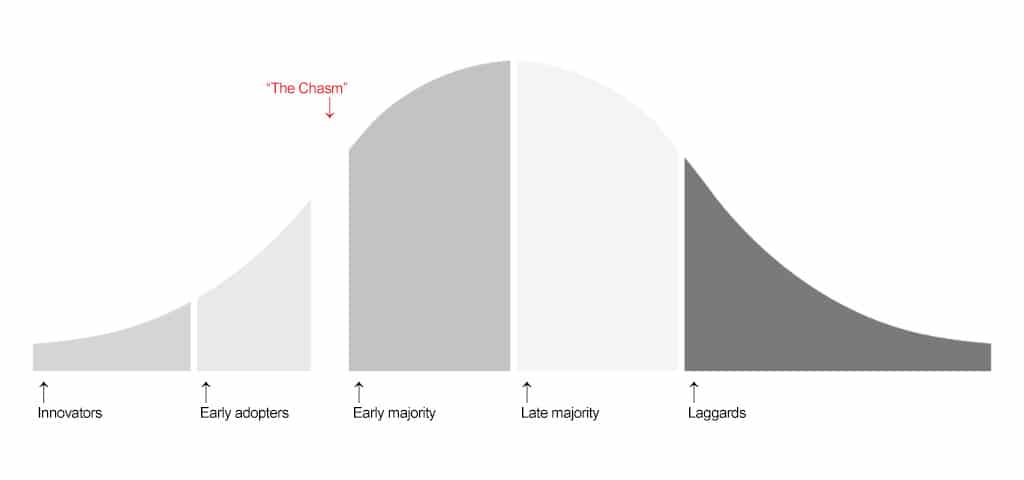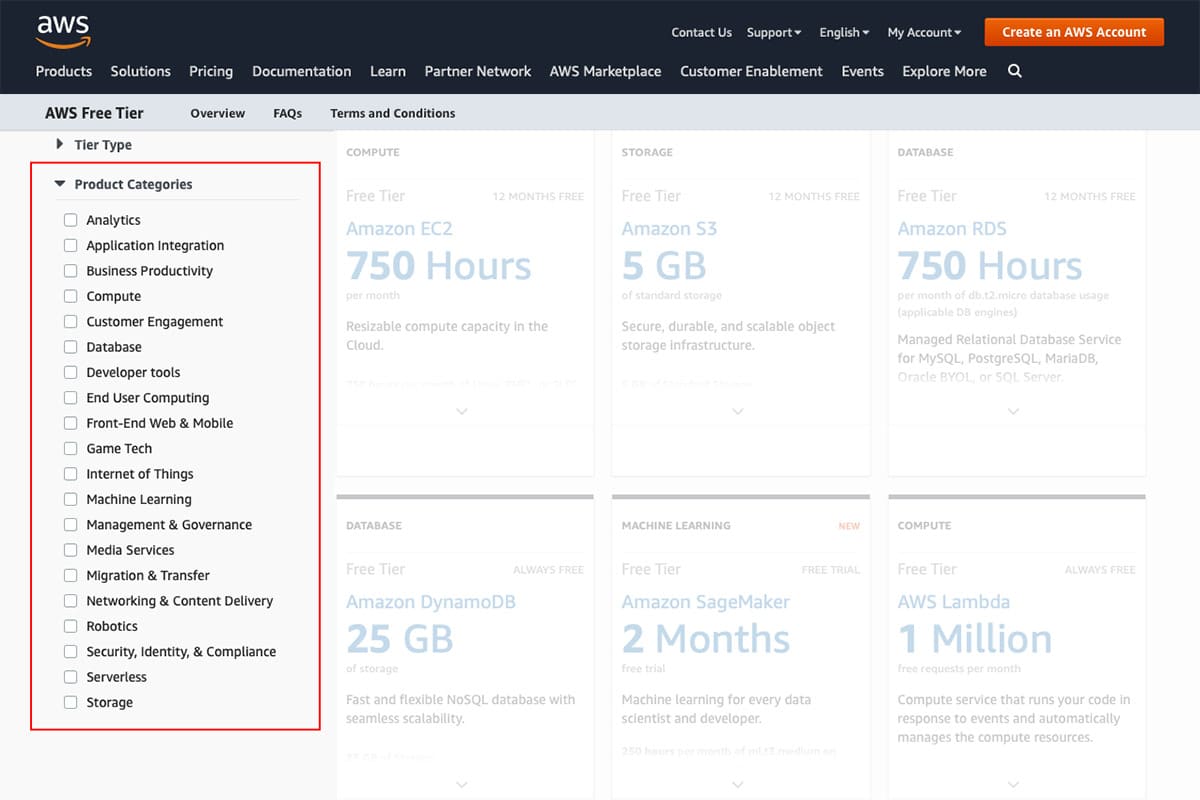Digitalisation “how to” (5/6): Scale your digital product/solution
The previous article of our Digitalisation “how to” series looked into some strategical points to consider when going to market with your digital product/service (e.g., positioning, technology adoption life cycle etc.). As you are already successful with the early adopters, now let’s see how you can scale:
— your business,
— your technology,
— and your team.
1. Scale your digital business
Let’s get back, briefly, to the technology adoption life cycle:One important point that comes across is that innovators and early adopters, although important for your business in its earliest phase, are only a small part of the total market (~1/6th). In order for your digital product/service to strive, it will need to reach the bigger parts of the market (i.e., the early majority and the late majority).
This should be easy, right? By this time, you have an innovative-hot digital product/service that’s already used by multiple early adopters, which earns them competitive leaps in their markets. You might have even tweaked your product/service to fit their specific needs, which shows how adaptable you can be. Right…?
Right. Except that, for the majority, these are not the most important things they need from your digital product/service:
- As opposed to the innovators and the early adopters, the early majority is very pragmatic. They look for incremental, predictable and measurable improvements, instead of “quantum leaps”.
- The early majority clients don’t take risks. They want a mature, stable and reliable (read “debugged”) digital product/service, that ideally comes with the appropriate infrastructure of supporting products and services.
- Usually, in order to buy, the early majority looks for references coming from other early majority (“pragmatic”) clients within their industry.
- They prefer to buy from market leaders because market-leading products/services benefit from an ecosystem of third-party, aftermarket products/services built around them.
And here is the catch: the early majority will not buy until you are established within the industry, but the chances are that your existing customer base (“risk-loving early adopters”) is not what the early majority looks for.
So, how do you break this cycle?
- Focus your efforts on the right niche (instead of selling “everything to everyone”).
- Build a stable digital product/service that fulfills the early majority’s needs.
- Win “safe”, referenceable clients to generate notoriety and authority/market leadership (i.e., “be the big fish in the small pond”).
- Always: under-selling and over-delivering is the best way to build buzz, then trust.
If you need encouragement that this is *the* way, look no further than the original SaaS: Salesforce.com. At a time (1999) when software was mostly available as a packaged product to be delivered and installed on-premise (with all the effort and inefficiency), Salesforce pushed the idea that software can be securely accessed via the internet (with significant reduction of investment and integration effort).
Instead of selling to everyone, Salesforce initially focused on a niche: sales personnel only (not customer service, marketing, etc.), in midsized companies (with no internal IT), within tech-related industries (pharma, telco, finance). The product was simple, intuitive, and delivered real value to enthusiastic clients who started to generate a lot of word-of-mouth about it. “One thing leads to another”, and nowadays Salesforce (/CRM) covers multiple services and industries, for a € 200B+ value.
2. Scale your technology
When talking about technology scaling, buzzwords like “cloud” and “SaaS” will always come up. Although they seem interchangeable, they are actually not the same:
- SaaS (as in “Software as a Service”) is usually an application that’s accessible on browser or dedicated app, all delivered via the cloud. The SaaS can be used either directly or integrated into further applications via APIs. Examples: native SaaS companies such as Salesforce, Zoom, Slack, or Dropbox; or regular-turned-SaaS organisations like Adobe and Microsoft.
- The cloud is usually seen as an innovative delivery method, but it goes way beyond that. According to US NIST definition, “Cloud computing is a model for enabling ubiquitous, convenient, on-demand network access to a shared pool of configurable computing resources (e.g., networks, servers, storage, applications, and services) that can be rapidly provisioned and released with minimal management effort or service provider interaction.”
[ Should you need more details, the US NIST goes on with further specifics of what makes the cloud, cloud:
- Five essential characteristics: On-demand self-service, Broad network access, Resource pooling, Rapid elasticity, Measured service
- Three service models: Software as a Service (SaaS), Platform as a Service (PaaS), Infrastructure as a Service (IaaS)
- Four Deployment Models: Private cloud, Community cloud, Public cloud, Hybrid cloud. ]
Therefore, one can say that SaaS is cloud software, but cloud software is not all SaaS.
Now, beyond the terminology, what are the actual implications for you? We think that the cloud has something for everyone, (almost) regardless of what the digital product/service is or does.
Here are the specific cloud categories of AWS:
As expected, AWS covers everything(?) from storage, computing, migration and security; all the way into specifics like developer tools, IoT/internet of things, ML/machine learning and management & governance. In their own words, “AWS can seem overwhelming. A cloud-native paradigm of building infrastructure can be a radical departure from the traditional on-premises way of doing things.”
However, as market leader (see 1. above), AWS has a complete product/solution offering that includes excellent documentation, detailed learn centre, and expansive Partner Network and Marketplace – all to make your adoption (and life) much easier.
Once more: whatever your digital product/solution(/SaaS) is, there is a chance that you can scale it better / quicker / more efficiently with cloud “blocks”.
3. Scale your team
Scaling your team while scaling your business can be tricky. On one hand, especially in competitive markets, some skills might be difficult to source (say, software developers with a very specific tech stack). On the other hand, your business growth might not be always linear – so, a full-blown team with permanent costs might not always accommodate your business plan and strategy.
For the second (and last) time in this series, let us self-plug again: at Berg Software, we are proponents of software outsourcing and custom software development. Although each of them addresses different clients with different needs, the fundamentals are the same: we provide software development skills in a flexible, scalable manner.
Here are several cases when look into software development outsourcing makes total sense:
- You have limited access to skills within your local talent pool.
- You need to scale-up your application (and the team) quickly.
- Rapid go-to-market.
- Short-term projects that don’t need a permanent, dedicated development team (e.g., developing an MVP).
- You need to lower your total costs, possibly with a pay-as-you-go scenario.
- You want to keep focusing on your core expertise (a specific technology, or sales and marketing etc.)
As for custom software development:
- There are cases where your software requirements are so specific, that custom software would be the most efficient one (if not the only).
- Instead of using a small part of a packaged software’s capabilities (while paying the full price), you focus the effort and resources into getting direct value.
- Direct value also comes from increased flexibility and integration. Custom software is 100% in your control to build and adapt, and way easier to integrate with both legacy systems and off-the-shelf software.
(There’s a lot that goes into software outsourcing and custom software development, beyond the scope of this article. Should you need further input, please just let us know.)
Conclusion
All along the Digitalisation “how-to” series, we keep referring to people, technology, strategies and tactics as being the main pillars for bringing a digital product/service from .ppt to .done. “Scaling” is no different – except that a bigger business also brings higher risks / opportunities / outcomes.
We hope that we provided you useful ideas, frameworks and tools, and we’re looking forward to supporting you during your own digitalisation journey.
_
Feel like sharing your own digitalisation experiences? Please get in touch!


